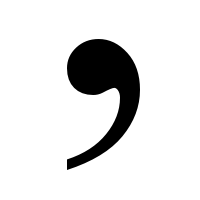There are 7 essential comma rules to learn. Learn when to use them, when not to use them, and how to avoid comma errors.
7 Comma Rules

Comma Rule #1: Use a comma after the penultimate item in a list of three or more items, before “and” or “or” (e.g. an Italian painter, sculptor, and architect).
INCORRECT: Da Vinci was an Italian painter, sculptor and architect.
CORRECT: Da Vinci was an Italian painter, sculptor, and architect.
Comma Rule #2: Use a comma to separate a prepositional phrase from the main sentence.
INCORRECT: In my office everyone has their own little cubicle.
CORRECT: In my office, everyone has their own little cubicle.Prepositions: in, at, on, to, by, for, etc.
Comma Rule #3: Use a comma to separate an adverb from the main sentence.
INCORRECT: Suddenly a chill went down my spine.
CORRECT: Suddenly, a chill went down my spine.Adverbs: suddenly, all of a sudden, silently, quickly, angrily, fortunately, unluckily, etc.
Comma Rule #4: Use a comma after time clauses that introduce sentences.
INCORRECT: After I got home I went straight to bed.
CORRECT: After I got home, I went straight to bed.Time clauses: After I got home, when I saw her, once I realized the time, etc.
Comma Rule #5: Use a comma after introductory phrases.
INCORRECT: In the morning I go for a jog.
CORRECT: In the morning, I go for a jog.
Comma Rule #6: Isolate interruptions with commas.
INCORRECT: It would
in turnlead to better health for people living in cities.CORRECT: It would, in turn, lead to better health for people living in cities.
Comma Rule #7: Use a comma to separate two independent clauses joined by a conjunction.
INCORRECT: The people on the boat were laughing and the people on the beach were watching. (Run-on sentence error)
CORRECT: The people on the boat were laughing, and the people on the beach were watching.Conjunctions: and, but, or, so.
BE CAREFUL: Don’t put a comma before an “and” + verb without a subject.
INCORRECT: The people on the boat
laughed, andsang.CORRECT: The people on the boat laughed and sang.
Comma Rule #8: Do not join two sentences with a comma. This is called a comma splice.
INCORRECT: It was getting
late, Iwas starting to panic.CORRECT: It was getting late, and I was starting to panic.
CORRECT: It was getting late. I was starting to panic.
